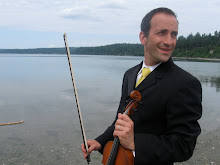At Mayfaire I had a helpful and appreciative conversation with a parent about conflict and the permission to sometimes allow conflicts to evolve with children taking the lead toward the solution (while remaining close enough to provide security and physical safety if it comes to that). When I took my RIE training in Los Angeles, one of my instructors, Bev Kovach, shared her article on assisting toddlers in conflict situations with us. It is written for caregivers working with groups of children with one or two or three adults, not necessarily for parents or for teachers of parent & child classes. As such, I have the following thoughts (some of which I shared with this parent on Sunday, or she shared with me).
1) You will likely find Kovach's ideas consistent with ideas from Vanessa's presentation at WIWS last spring.
2) When children are of different ages (toddlers and infants together; older and younger toddlers), we may have to intervene, defend, redirect more. When children are hungry or tired, we need to intervene or redirect more.
3) RIE's wisdom comes from Loczy in Hungary, which is shown to have fostered excellent child development (not just in light of being an orphanage). In Loczy, the caregivers are incredibly consistent (same group of carers with children their whole first 3 years; same caregivers stay with Loczy for decades and decades), and their ability to refrain from intervening too soon leads to a more harmonious social network among the toddlers over time. As parents, we may be in a variety of places all the time, and we don't know how other parents will react to a conflict at a playground or birthday party. If we feel things might not work out for the best, sometimes our best option may be to come up with a creative redirection (excuse, pretend coughing fit) and decide that there will be other chances for our own to child to learn from conflict later.
4) As Kim Payne quotes from one of my friends in Baltimore, "Don't just do something. Stand there!" Sometimes our calm presence is enough to help. Sometimes our objective reporting ("both children are pulling on the rope") is enough to help children feel recognized so that they can find their own direction. It is very helpful at these times if we can project confidence, calmness, grace, stability rather than fear and worry.
5) The following imaginative picture (which I've written about before) works for me. Use it if it works for you. As you may know, Rudolf Steiner provided us with elaborate pictures of the spiritual. Brian Gray, a teacher at Rudolf Steiner college (and rock musician in the house band), had a gift for translating Steiner to make his insights accessible. Brian summed up a complex discussion with the following: "So in essence, when we take care of pets or farm animals, we are practicing to become angels." As angels tend to each of us, the quiet and removed and strong archangels tend to interactions amongst us. It helps me, during tense times of conflict, to practice being an archangel--confident, strong, removed.
6) This image may not work for you. I've heard others use the term shadowing for being close to children to ensure safety and broadcasting or narrating for the factual, nonjudgmental reporting of what is happening. Andrea Gambardella, Waldorf teacher of teachers, recommended that as teachers and parents we find our own metaphor to help during turbulent times. When teaching the nursery class, Andrea meditated upon being a heavy stone in a river. Water and currents might rush and dash and bubble and gurgle about, but the stone remains strong, steady, and consistent. Whatever metaphor you use. I recommend finding one. Our children learn a great deal not just from our words, but from our thoughts (or thoughts expressed by body language, gesture, and intentions).
With warmth and light,
William Geoffrey Dolde

No comments:
Post a Comment